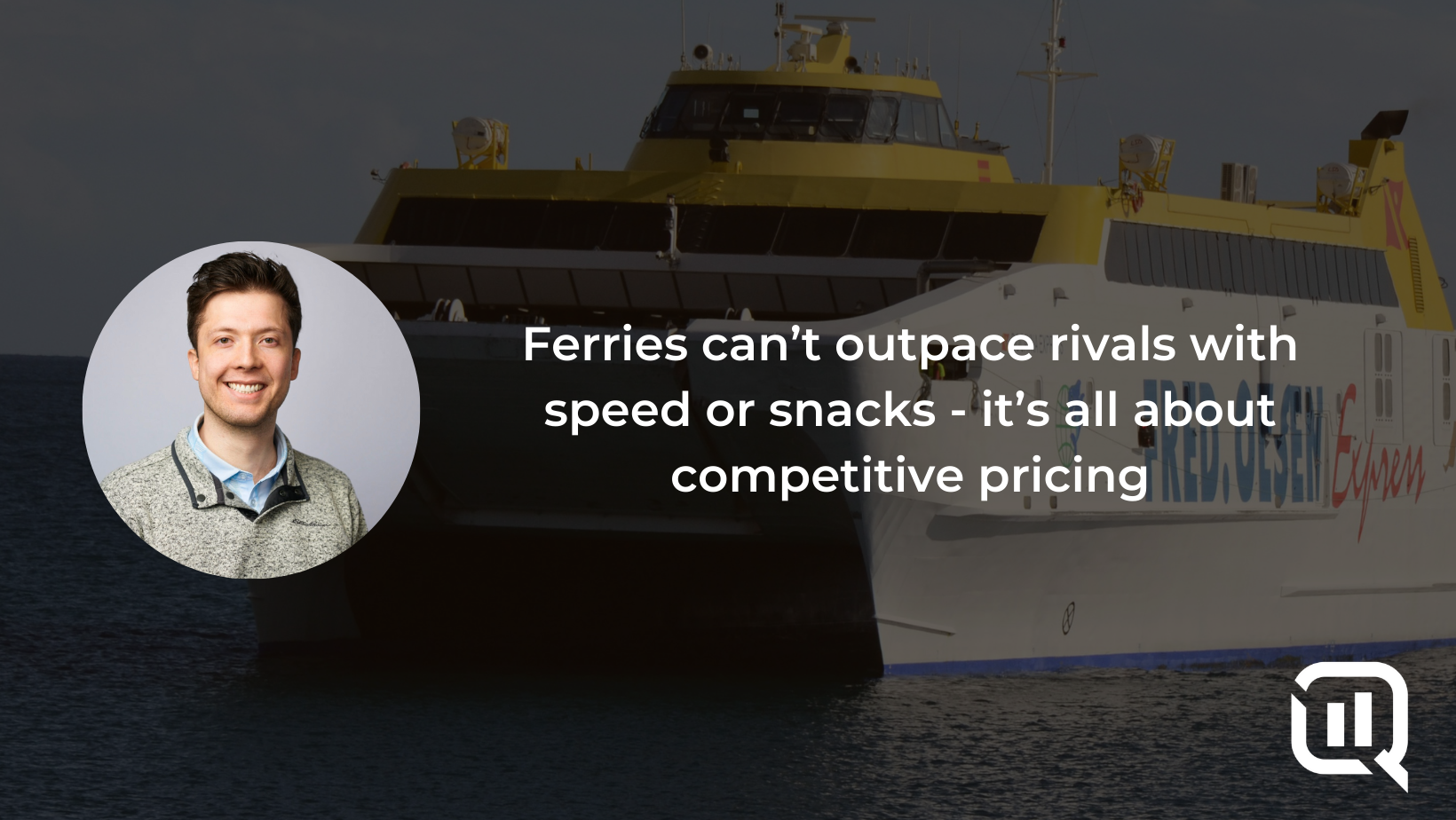The age-old adage of “All Roads Lead to Rome” represented the continental infrastructure that the ancient Romans constructed to knit together their empire. It was a statement on the widespread presence of stone-paved roads connecting major cities and military bases. Europe was forever changed by these roads.
There is a slightly lesser known adage, recently coined by me, that “Roads are Fine but Ferries are Faster.” It’s only slightly less catchy than the original, but references something just as important. Each day, thousands of industrious sea-born ferries slice through the seas of the Mediterranean, Baltic and English Channel to deliver vacationers, commuters and tourists to their destinations. Without ferry operators, a resident of Oslo, Norway, would have to drive along a cumbersome land route to enjoy a weekend in Copenhagen, Denmark. By cruising along the natural seaways connecting cities and towns in Europe, ferries allow passengers to avoid traffic and train stops. In a fraction of the time! In some cases, ferries are the only thing that connects islanders to the mainland.
So, the world over recognizes the value of boat transportation, that’s clear. But what most don’t realize is that ferry operators are in fierce competition with one another. Most operate ferries that compete directly on the same sea lane or from ports near enough to have overlapping customers. There are a handful of operators that have a monopoly on certain routes. That could be the market equilibrium for a number of reasons. Depending on the route, that can be because it’s not very profitable or has perilously frequent Orca attacks. But even monopolistic ferry companies have to watch out for new competitors opening new routes and stealing market share.
How can a ferry operator successfully compete in their local market? Boat technology isn’t leaping forward every year, so they likely can’t sail much faster than their rival barge. They can offer some complimentary snacks or amenities, but does that sway a customer that might ride a ferry every day to work? Probably not. Customers care about the bottom line, which means ferries are competing on price.
Pricing in the world of ferry transport is delightfully complicated. It’s not just about the number of passengers or specific route. The price one might pay to board the boat will vary the most based on the departure date and time, but there are variables beyond that. Are you bringing a vehicle on? What kind of vehicle? Are you a member of their frequent rider program? How many others want to travel at the same time? Are you booking a private cabin to enjoy for the duration of the ride, or will you be perched on the deck? Ferry companies must have a myriad of prices ready to present based on customer inputs.
Having worked with ferry companies for several years, I’ve learned that most tackle this pricing challenge the worst way possible – manually. Fleets of expensive employees painstakingly check their competitors’ websites to find out prices, then grind out internal price updates based on that data. That means that their prices are being updated only a few times per month. In contrast, ferry operators using competitive QL2 data can update their prices daily. They consider both competitor positioning and fluctuations in daily demand. The most sophisticated even link our data to internal inventory metrics to increase price as available seats go down. The difference in these processes can lead to significant revenue disparities.
When prices are updated more frequently you reduce the number of cases where your fare is priced far outside of the market average and your competitor gets to pocket all of the bookings for that day.
Once a ferry company begins assessing competitive data from other ferry businesses, they aren’t yet seeing the whole picture. That’s because intra-Europe transportation isn’t dependent on one or two forms of transit, like it is in the United States. Travelers can choose between trains, planes, and ferries, often with comparable prices and travel times. There are some exceptions to this. There isn’t an undersea railway from Southampton to the Isle of Wight off the coast of England. And many smaller islands don’t have accessible airports. But for itineraries between two major cities like Helsinki to Stockholm? Travelers have a score of options available to them.
The most advanced ferry operators I work with adopt a comprehensive approach to competitive intelligence, extending their analysis beyond maritime operations. For instance, a ferry operator on the Helsinki-Stockholm route might analyze pricing for Ryanair flights to nearby airports and high-speed train connections departing from the cities. Some even conduct monthly surveys of local rental car rates. Given the multitude of travel options available to European passengers, forward-thinking ferry companies must maintain a competitive edge across all modes of travel.
Competitive intelligence is a tool that boosts revenue for any company that puts it to good use. It’s just as valuable to small ferry operators as it is to massive aggregators like DFDS. QL2 has a wealth of experience guiding ferry companies of all sizes, and the expertise to help shape pricing strategies based on market knowledge. To learn more about how QL2 can help your ferry business thrive, contact me at cschneider@ql2.com to start a conversation!


